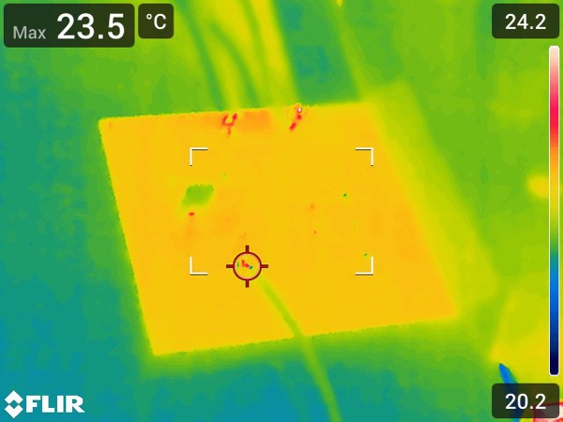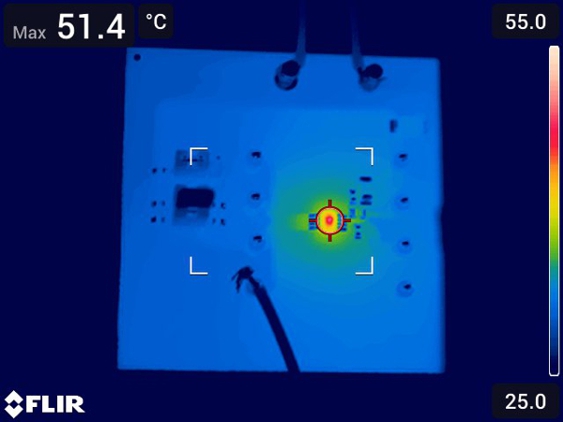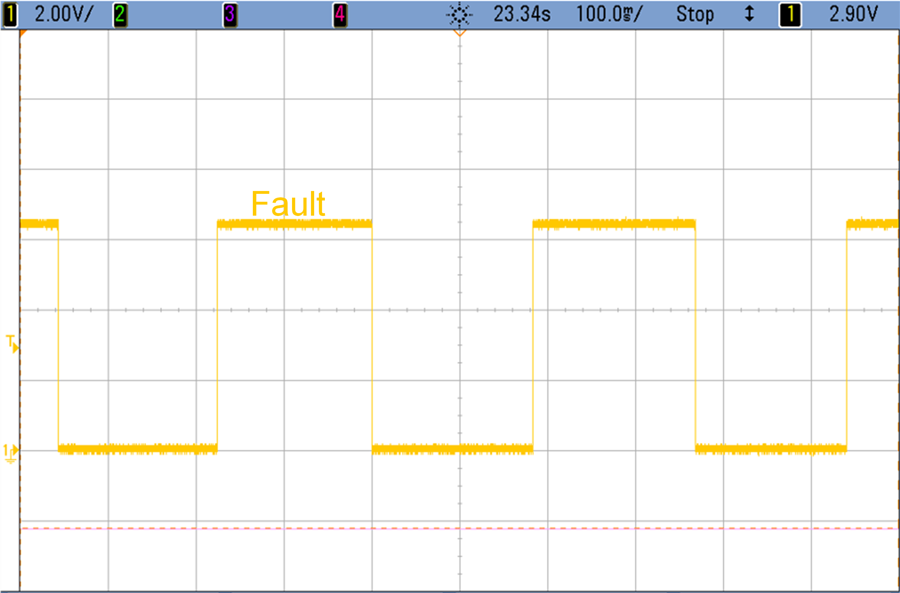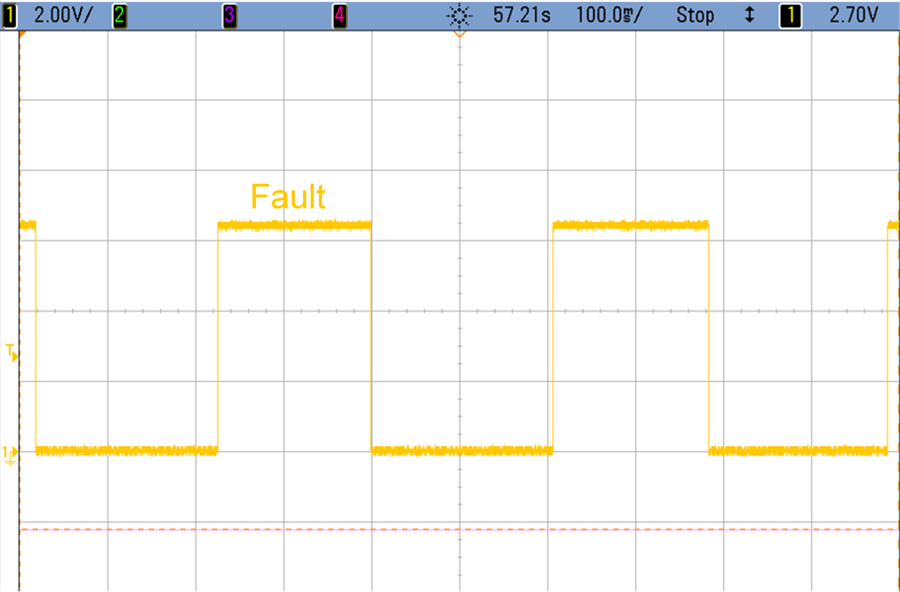SLVAFE5 September 2022 TPS92610-Q1 , TPS92611-Q1 , TPS92612-Q1 , TPS92613-Q1
3.4 Thermal Testing for Overtemperature Conditions
To test the time needed to wait for the TPS92611-Q1 to cool after an OT condition, a thermal camera was used to measure the temperature rise of the TPS92611 when driving a 100 mA through the three LEDs on the TPS92611-Q1 EVM. Figure 3-14 shows the IC at room temperature and Figure 3-15 shows when the IC has fully self-heated.
 Figure 3-14 TPS92611-Q1 at Room
Temperature
Figure 3-14 TPS92611-Q1 at Room
Temperature Figure 3-15 TPS92611-Q1 Self-Heating
Driving 100 mA at Room Temperature
Figure 3-15 TPS92611-Q1 Self-Heating
Driving 100 mA at Room TemperatureAs shown by the thermal camera photographs, the self-heating is about 28°C. Once the self-heating was determined, the TPS92611-Q1 EVM was placed inside a thermal stream to test behavior in high ambient temperature conditions. The EVM was first heated to 150°C after which the PWM was toggled on for the EVM allowing the TPS92611-Q1 to self-heat to the thermal shutdown threshold. Once the OT occurred, the TPS92611-Q1 output and fault pin turns on and off periodically at an approximately constant rate. The time the fault is low (output disabled due to OT) is the time needed to allow the device to cool down from an overtemperature event. Figure 3-16 shows the fault pin switching at 150°C. The device turns off for approximately 180 ms each time.
 Figure 3-16 150°C Ambient Overtemperature
Fault Output
Figure 3-16 150°C Ambient Overtemperature
Fault OutputAn additional test was conducted at 165°C to compare results. Figure 3-17 illustrates fault switching at 165°C.
 Figure 3-17 165°C Ambient Overtemperature
Fault Output
Figure 3-17 165°C Ambient Overtemperature
Fault OutputIn this case, the device turns off slightly longer than 200 ms each time. Given these results, a turn off time between 220 ms to 400 ms is viable but the recommendation is to test the thermals in the expected conditions of the use-case.